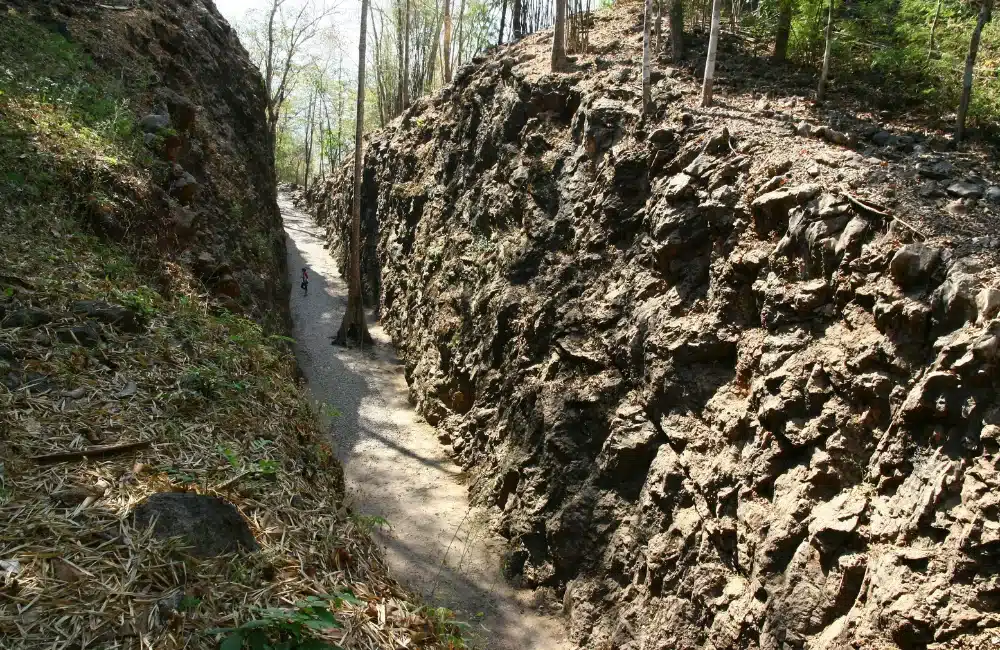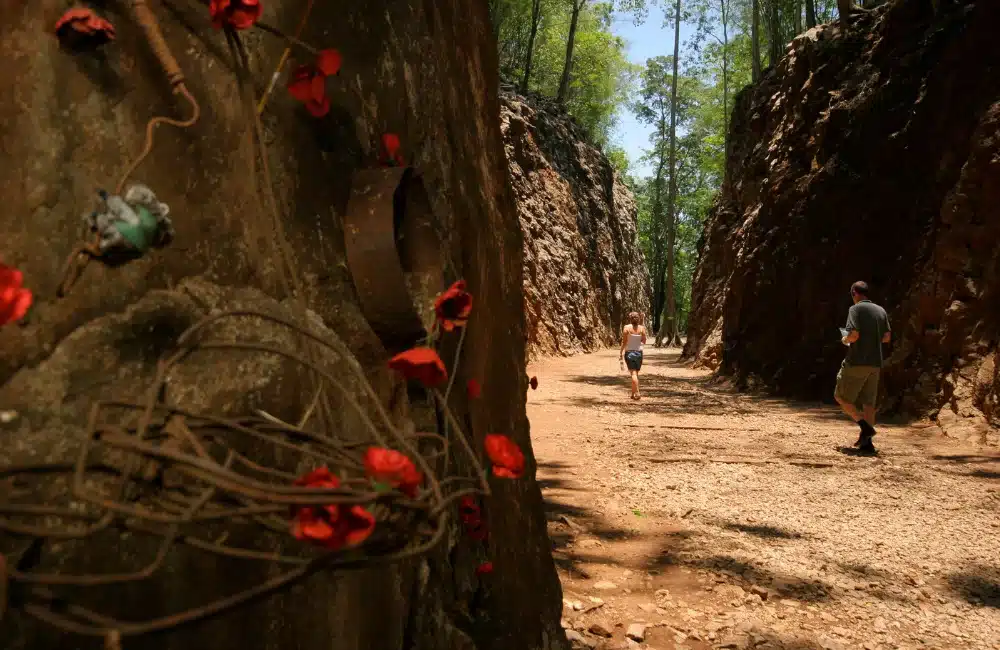In this article, let’s take a journey to Hellfire Pass Memorial Museum, located in Kanchanaburi Province, Thailand. This historic site, known as “Hellfire Pass”, tells a haunting tale from world history. As more than just a memorial, it’s surrounded by stunning natural beauty, including the Bridge Over the River Kwai, Tham Krasae Railway Station, and other highlights. Why do foreigners call it “Hellfire Pass”? Let’s explore, and you’ll understand.
Table of Contents
The Origins of Hellfire Pass

Hellfire Pass, officially known as Hellfire Pass Memorial Museum, is part of the Thai-Burma Railway, often referred to as the Death Railway. Its history dates back to World War II, when Japan sought to construct a railway route to Myanmar (then Burma) through Thailand. The route required cutting through a massive mountain, filled with rocky terrain and dangerous cliffs. To achieve this, prisoners of war (POWs) were forced to dig through the mountain, enduring unimaginable hardship.

This site earned its grim nickname due to the horrific conditions faced by the laborers. Working under extreme heat, the POWs chiseled through rock formations up to 11 meters high with minimal tools, insufficient food, and water. Many fell ill or perished during the construction. The combination of suffering and the glow of lanterns used at night gave the pass its infamous name “Hellfire Pass“
Key Highlights of Hellfire Pass

1. Hellfire Pass Memorial Museum
The museum serves as a monument to the POWs who suffered and sacrificed during the railway’s construction. Inside, visitors can learn about their struggles through multimedia presentations, tools used during construction, and detailed exhibits. The atmosphere captures the despair and resilience of those who endured this ordeal, leaving visitors deeply moved.
2. The Old Railway Tracks
Take a walk along the remnants of the railway tracks, where traces of the past still linger. The narrow pass, only 17 meters wide, reveals marks of stone blasting and the labor that once took place. Walking deeper into the pass intensifies the emotional experience, as visitors witness the physical remnants of history firsthand.
3. Nature and Scenic Views
Hellfire Pass is surrounded by breathtaking scenery, including lush forests and towering cliffs. A highlight for visitors is the viewing point, where POWs once drew inspiration to keep going despite their hardships. The natural beauty offers a stark contrast to the grim history of the site, reminding visitors of resilience and hope.

เรียกได้ว่าช่องเขาขาดหรือ “ช่องไฟนรก” ไม่เพียงแต่เป็นสถานที่ที่สร้างความเศร้าสลดใจให้แก่ผู้มาเยือนเท่านั้น แต่ยังสร้างแรงบันดาลใจในการมีชีวิตเพื่อต่อสู้กับอุปสรรคต่าง ๆ ที่เข้ามาอีกด้วย เป็นเรื่องราวประวัติศาสตร์ที่มีความน่าสนใจและได้อะไรกลับไปไม่น้อยอย่างแน่นอน
Summary
Hellfire Pass, or “The Pass of Hellfire”, is not just a site of sorrow; it is also a testament to human strength and perseverance. Visiting this historical landmark provides valuable lessons and reflections on overcoming challenges.

If you plan to explore the area, consider staying at Hintok River Camp, a luxurious riverside glamping site. Enjoy the beauty of nature with all the comforts you need, from cozy tents to private amenities, and take in the serene surroundings of the Kwai River. 🌿

